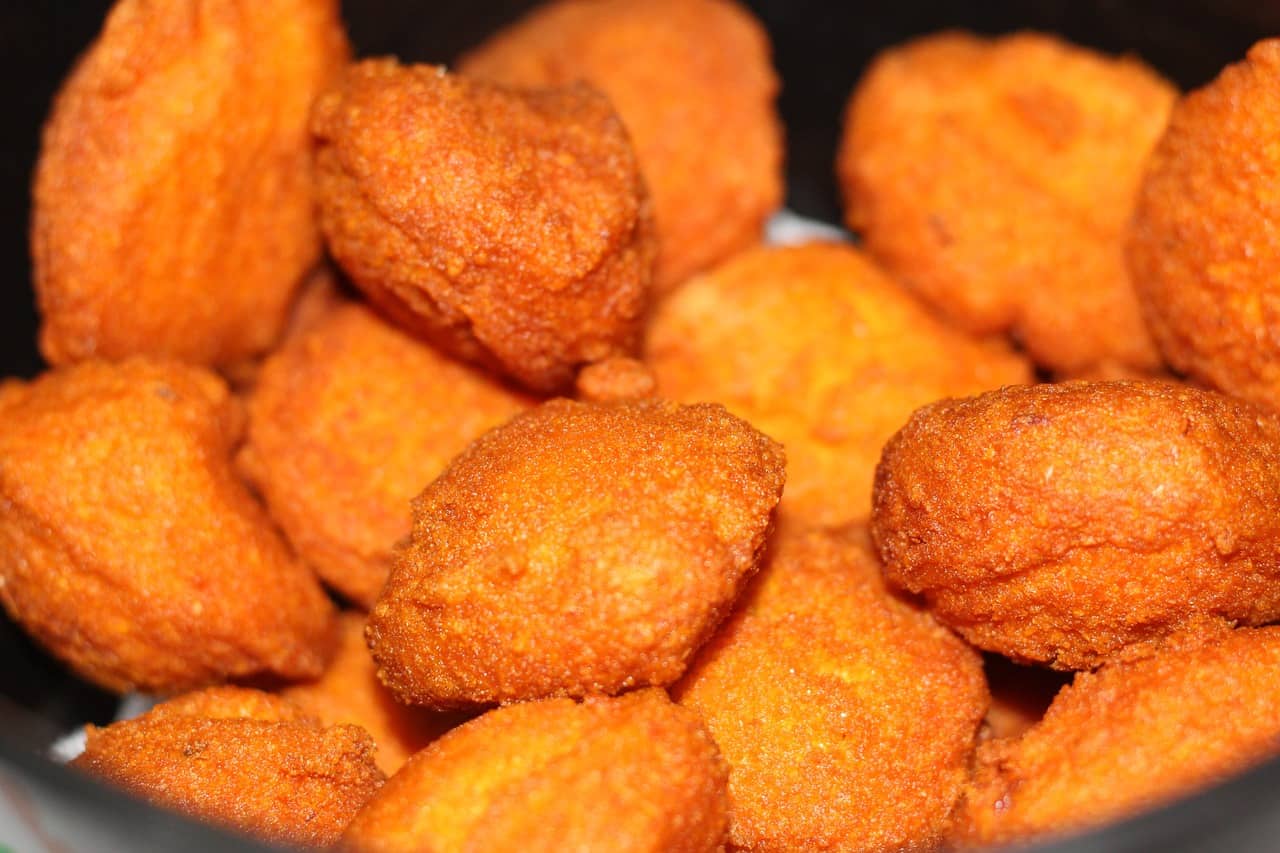Salvadoran cuisine is a vibrant tapestry of flavours, aromas, and textures that capture the essence of Central American culinary traditions. From the iconic pupusas to the hearty tamales and the refreshing horchata, Salvadoran food offers a compelling journey for the taste buds.
This article will take you on a culinary adventure through the diverse dishes that make up Salvadoran cuisine, providing insights into their unique flavours and cultural significance. Join us as we explore the rich tapestry of Salvadoran food, a true celebration of Central American culinary heritage.
Pupusas: the national dish of El Salvador
In the heart of Central America lies a culinary gem that embodies the vibrant spirit of El Salvador: the pupusa. These delectable handmade corn tortillas, generously filled with various savoury ingredients, have earned the esteemed title of El Salvador’s national dish and are a source of immense national pride.
Pupusas are:
· A testament to the rich cultural heritage of El Salvador.
· Showcasing the country’s deep-rooted connection to corn.
· A staple crop that has sustained its people for generations.
Each pupusa is lovingly crafted by hand, its thick, pliable dough transformed into a culinary canvas upon which a symphony of flavours awaits.
Traditionally cooked on a sizzling grill or comal, pupusas emanate an enticing aroma that wafts through the air, beckoning food enthusiasts to indulge in their irresistible charm. The fillings, a harmonious blend of cheese, beans, or succulent meats, burst with flavour, tantalizing the taste buds and leaving an indelible mark on the culinary landscape of El Salvador.
As the pupusa’s popularity soared, it transcended the boundaries of home kitchens and became ubiquitous in the country’s culinary scene. Street vendors and small restaurants proudly display their pupusa creations, enticing passersby with the promise of a culinary delight that encapsulates the essence of Salvadoran cuisine.
The pupusa’s rise to national prominence is a testament to its ability to unite Salvadorans, transcending social and economic divides. It serves as a symbol of national identity, a culinary ambassador that carries the flavours of El Salvador to the far corners of the globe. With each bite of a pupusa, one embarks on a culinary journey, discovering the rich tapestry of flavours and traditions that make El Salvador a culinary paradise.
Tamales: a traditional Salvadoran delicacy
Tamales are a traditional Salvadoran delicacy made from masa, a dough made from cornmeal. They are filled with various meats, vegetables, or fruits, then wrapped in banana leaves or corn husks and steamed. Tamales are typically served with a sauce, such as a tomato-based or sour cream sauce. They are famous for special occasions, such as holidays or parties.
The history of tamales dates back to the ancient Maya and Aztec civilizations. Tamales were initially made to preserve food, as they can be stored for long periods without spoiling. They were also ceremonial food and often offered to the gods.
Today, tamales are still a popular dish throughout Central America and Mexico. They are also enjoyed in other parts of the world, including the United States. There are many variations of tamales, but the essential ingredients and cooking methods remain the same.
Tamales are a delicious and versatile dish that can be enjoyed for breakfast, lunch, or dinner. They are a great way to experience the rich flavours of Salvadoran cuisine.
Frijoles y Arroz: a simple but flavorful side dish
In Salvadoran cuisine, Frijoles y Arroz is a simple yet delicious side dish that holds a special place in the hearts of locals. This humble dish consists of black beans and white rice, skillfully combined with aromatic garlic, sautéed onions, and a delightful blend of spices. The result is a flavorful symphony that perfectly complements the other traditional delicacies of El Salvador, such as pupusas and tamales.
The origins of Frijoles y Arroz can be traced back to the indigenous communities of Central America, where beans and rice were staple foods. Over time, this culinary creation evolved and became an integral part of Salvadoran gastronomy. It is now a popular meal that is served on dinner tables all over the nation and is cherished by both friends and family.
The preparation of Frijoles y Arroz is a straightforward process that begins with carefully selecting high-quality black beans and white rice. The beans are lovingly cooked until they reach a tender, melt-in-your-mouth texture, while the rice is cooked separately to achieve the perfect balance of fluffiness and moisture.
The magic truly happens when these two components are united in a harmonious blend. The sautéed garlic and onions release their fragrant aromas, infusing the dish with an irresistible savoury essence. The spices, carefully chosen and expertly combined, add depth and complexity to the flavour profile, transforming the simple ingredients into a culinary masterpiece.
Frijoles y Arroz is not just a side dish; it embodies Salvadoran culture and tradition. It represents the warmth and hospitality of the Salvadoran people, who take pride in sharing their delicious cuisine with others. Whether it’s a casual family meal or a festive gathering, Frijoles y Arroz is always there to bring people together and create cherished memories around the dining table.
Yuca Frita: a popular street food in El Salvador
Yuca frita is a popular street food in El Salvador made from yuca, a starchy root vegetable native to South America. Yuca frita is typically served with curtido, a pickled cabbage slaw, and a spicy sauce called salsa roja. It can also be found in other Latin American countries, such as Colombia, Ecuador, and Peru.
The preparation of yuca frita begins with peeling and cutting the yuca root into long, thin strips. These strips are then deep-fried until they are golden brown and crispy. The result is a delicious and satisfying snack, perfect for any occasion. Yuca frita can be enjoyed independently or as a side dish with other Salvadoran dishes, such as pupusas or tamales.
Yuca frita is a versatile dish that can be enjoyed in many ways. Due to its ease of preparation and universal appeal, it is a well-liked option for get-togethers and parties. Yuca frita is also an excellent option for a quick and easy meal on the go.
This delicious dish is a must-try for anyone visiting El Salvador or exploring Central American cuisine’s flavours. With its unique taste and texture, yuca frita will surely be a hit for everyone who tries it.
Horchata: a refreshing Salvadoran drink
Horchata is a refreshing Salvadoran drink made from rice, sugar, cinnamon, and vanilla. It is typically served chilled and is a popular drink in El Salvador and other Latin American countries. The drink is believed to have originated in Valencia, Spain, where the Moors introduced it in the 8th century. Spanish colonists introduced it to Latin America, establishing it as a mainstay food.
Traditionally, horchata is created by blending rice with water and filtering the resulting liquid to eliminate the particles. The resulting liquid is then sweetened with sugar and flavoured with cinnamon and vanilla. It is often served with a garnish of cinnamon sticks or ground cinnamon. Horchata can be enjoyed independently or complement other dishes, such as pupusas or tamales.
In addition to its refreshing taste, horchata is also believed to have several health benefits. It is a good source of carbohydrates, protein, and vitamins and low in fat and cholesterol. Horchata is also a good source of antioxidants, which can help protect the body against damage from free radicals. Some people also believe that horchata can help improve digestion and reduce inflammation.
Whether you are looking for a refreshing drink on a hot day or a healthy beverage to add to your diet, horchata is a great option. It is a delicious and nutritious drink that people of all ages can enjoy.










